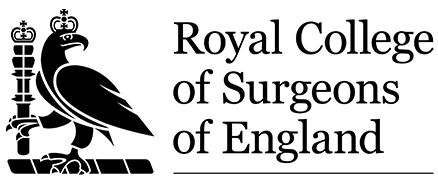Posted by Dr Ashish Dutta on 1 August 2017
Gynecomastia (enlarged male breasts) – “Gyne” stands for female and “mastia” stands for the breast. Gynecomastia is strictly a male disorder which occurs due to enlargement of the glands. Sometimes it is caused by an accumulation of fatty tissue – when breast enlargement is caused by fatty tissue alone it is known as pseudo-gynecomastia.
There are many causes for this disorder such as a hormonal imbalance (estrogen and testosterone), due to a liver or testicular disorder; drugs such as anabolic steroids or puberty. Breast enlargement in men can also be caused by weight gain, obesity or old age. In very rare cases, cancer can cause Gynecomastia. It can affect one or both breasts, sometimes unevenly. Generally, gynecomastia is not a serious medical problem, but it can be tough for boys and men to cope with the condition as it affects mental well-being and lifestyle.
Components of Gynecomastia
Dr Ashish Dutta categorises gynecomastia into five types based on what is basically causing the enlarged breast.
- Puffy Nipples
- Classic gynecomastia
- Saggy gynecomastia
- Fatty gynecomastia
- Breast Roll
Causes of Gynecomastia
There are basically three primary causes for each type of gynecomastia.
These are:
- Excess breast tissue
- Excess body fat
- Excess skin
- Or a combination of all these
The reason for the gynecomastia is usually determined during the consultation or clinical examination by Dr Ashish Dutta.
However, there are some rare cases where the actual reason can only be determined at the time of surgery.
Often, the exact cause of a person’s gynecomastia cannot be pinpointed because the exact cause can range from intake of medications to hormonal changes, to genetic predisposition.
In fact, this medical condition is common in healthy teenage boys, usually around 15 years old, who have this problem for 1 to 2 years while going through puberty.
- Excess Estrogen – Naturally high level of estrogen or a high ratio of estrogen to testosterone may cause gynecomastia.
- Steroid use – gynecomastia is a common side effect of anabolic steroid use. Males naturally produce small amount of estrogen but anabolic steroid use may elevate the level of estrogen causing enlarged male breast.
- Medications and chemicals – Certain chemicals and medications may be the cause for gynecomastia. Some of these medications and chemicals are: estrogens, digitalis, metronidazole, cisplatin, spironolactone, cimetidine, isoniazid, clomiphene, ketoconazole, methyldopa, tricyclic anti-depressants, valium, heroin, and marijuana or Avadart, Propecia and many pro-hormones taken to increase muscle mass. If any one have taken any of these medications, he should discuss his condition and his prescription with his physician.
- Excess weight – It can cause complex hormonal imbalances, so the candidate/patient may choose a course of weight-loss treatment to reduce the size of his enlarged breast and improve his health before choosing the surgery. You may also want to find out about the possibility of liver problems, as they can contribute to gynecomastia as well.
- Klinefelter Syndrome – Another cause of gynecomastia is Klinefelter syndrome which is a sex chromosomal abnormality. Males with this condition have an extra “X” chromosome. Men usually have “XY” sex chromosomal combination whereas women have “XX” sex chromosomal combination. However, men with Klinefelter syndrome have an abnormal “XXY” chromosomal combination. According to most of the studies on this disease, men with Klinefelter syndrome have a 20 fold chance of breast cancer than men with normal “XY” combination and gynecomastia is a common symptom among these men.
- Hyperthyroidism – The thyroid gland is one of the endocrine glands in our body that controls a number of crucial functions. When the thyroid gland produces more thyroid hormones than required, this leads to hyperthyroidism. Hyperthyroidism is predominantly found in females but males can also have this medical condition and this is also considered as one of the causes of gynecomastia.
- Ageing – When males get older, the testosterone levels either become dormant or reduces from their earlier levels and this can lead to an imbalance of the female hormone estrogen and it may lead to gynecomastia.
Grades or Types of Gynecomastia
Not all gynecomastia are the same and there are different levels or grades depending upon breast enlargement size as well as the feminisation of the breast.
Dr Ashish Dutta categories gynecomastia into following seven categories-
Grade or Type | Description | Severity | Common in Age Group/Demographics |
Type 1 (Puffy Nipple) | Breast tissue – under nipple/areola only Nipple position – above border of pectoral muscle Lateral chest fold – tight, straight | Very mild | 15-25 (Teenagers & Body Builders) |
Type 2 | Breast tissue – extends over chest fold Nipple position – above border of pectoral muscle Lateral chest fold – tight, round Chest angle < 45° | Mild breast sag | 16-35 (Frustrated Young Adults) |
Type 3 | Breast tissue – extends over chest fold Nipple position – 0 to 2 cm. below the border of the pectoral muscle Lateral chest fold – mild laxity, horizontal Chest angle 45°-60° | Mild to high breast sag | 25-60 Adult onset gynecomastia |
Type 4 | Breast tissue – extends into axilla(armpit area) Nipple position – >1.5 cm below border of pectoral muscle Lateral chest fold – small breast roll in front of arm pit Chest angle 60°-90° | Moderate breast sag | 40-60 (The aging Males) |
Type 5 | Breast tissue – extends into axilla Nipple position – ≥ 2 cm below border of pectoral muscle Lateral chest fold – breast roll extends to the back of arm pit Chest angle > 90° | Severe breast sag | Overweight, Massive weight loss |
Type 6 | Breast tissue – extends into axilla Nipple position – ≥ 2cm below border of pectoral muscle Lateral chest fold – breast roll extends around to back | Extreme breast sag visibly feminine | Overweight, Massive weight loss |
Gynecomastia Treatment
There are three main options for the treatment of gynecomastia with each one of them having their own advantages and disadvantages. It also depends upon factors like how you want to get rid of it, whether you are looking for a temporary or permanent solution and most importantly, how much you are willing to spend.
Gynecomastia Shirts – This is the cheapest of all the options in masking gynecomastia but it is not a permanent solution.
Gynecomastia Pills – These are considered cheap when you compare it with gynecomastia surgery. Gynecomastia pills available in the market of UK fall under three different classes.
Type 1 for men who already have gynecomastia (excess breast tissue)
Type 2 for men who takes steroids and who wants to protect themselves against gynecomastia
Type 3 for men suffering from pseudo gynecomastia (chest fat)
Both the above treatment option is a temporary solution but if you are looking for a permanent option, the gynecomastia is the only option to treat man boobs
Gynecomastia Surgery – Gynecomastia surgery may be in the form of liposuction which is a procedure to remove breast fat but not the breast gland tissues itself, or mastectomy which is a surgical procedure involving the removal of the tissue underneath the breast.
Mastectomy has been done for smaller breasts using tiny incisions to make it less invasive and involves less time for recovery. However, for larger breasts, a longer incision is necessary.
Other surgical approaches include subcutaneous mastectomy, liposuction-assisted mastectomy, laser-assisted liposuction and laser-lipolysis without liposuction procedure. But mastectomy may have complications such as breast asymmetry, necrosis of the nipple or areola, shape deformities, hematoma, visible scars, and possible infection of the surgical wound.
With this kind of surgery, expected cost is between £6000 and £7500. For vaser assisted liposuction and gland excision prices vary between £3000 and £5000. This is an estimate only since the actual costs would be determined during our free consultation.
Dr Ashish Dutta the Chief Surgeon and Founder at Aesthetic Beauty Centre is a respected cosmetic surgeon and has been practising Cosmetic Surgery since 2000.
To have a one-on-one consultation please click here


